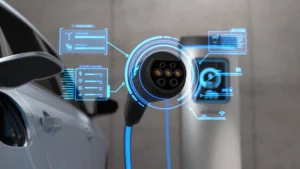As the popularity of electric vehicles (EVs) continues to rise, the demand for EV charging stations has grown substantially. However, one of the major hurdles faced by businesses, property managers, and municipalities is the cost of installing and maintaining these charging stations. For those looking to offer EV charging services or build infrastructure to support electric vehicles, controlling these costs is essential for making EV charging accessible and profitable.
This article explores several strategies for reducing the costs associated with EV charging stations, from installation and operational expenses to ongoing maintenance and energy management.
Understanding the Costs of EV Charging Stations
Before diving into cost-saving strategies, it’s important to understand the factors that contribute to the total cost of an EV charging station. These costs can be broken down into several categories:
- Installation Costs This includes the cost of purchasing the charging equipment and physically installing the units. The installation may require significant electrical upgrades, such as increasing power supply capacity or installing dedicated transformers. Costs will also vary depending on the location, labor expenses, and any required permitting or construction.
- Hardware Costs The price of the EV chargers themselves varies depending on the type of charger. There are three common levels of EV chargers:
- Level 1 These are basic chargers that use a standard 120-volt outlet and provide slow charging. These are typically the least expensive but may not be suitable for high-demand locations.
- Level 2 These chargers are more commonly used in commercial settings and offer faster charging using a 240-volt supply. They are moderately priced compared to Level 3 chargers.
- Level 3 (DC Fast Chargers) These are the most powerful chargers, capable of charging a vehicle in a fraction of the time it takes Level 1 or Level 2 chargers. However, they are also significantly more expensive to purchase and install.
- Operating Costs After installation, EV charging stations will incur ongoing costs such as electricity consumption, network management fees, and maintenance. These operational costs can accumulate over time and significantly impact the return on investment (ROI).
- Maintenance Costs Like any piece of infrastructure, EV charging stations require regular maintenance to ensure they remain functional and safe. This includes software updates, hardware repairs, and customer support services.
- Energy Costs The cost of electricity is a significant factor in operating EV charging stations. Peak energy usage rates and demand charges can increase electricity expenses, especially in areas with high energy costs.
Now that we have an understanding of the cost components, let’s explore strategies to reduce these expenses.
1. Optimize Charger Selection
Choosing the right type of charger is one of the first and most impactful steps in reducing costs. While it may be tempting to invest in the fastest, most powerful charging stations, it’s crucial to assess the actual needs of the location.
- Match Charger Type to Demand Installing Level 3 chargers is not always necessary, especially if the charging station will serve locations like workplaces, residential complexes, or shopping centers, where vehicles are parked for longer periods. In these cases, Level 2 chargers may be more cost-effective, as they provide adequate charging speeds without the higher upfront and operational costs of Level 3 chargers.
- Assess Usage Patterns Analyze the expected demand for the chargers. For instance, if you anticipate that most users will charge their vehicles overnight or during work hours, slower chargers could be sufficient, and you won’t need to invest in expensive high-speed chargers.
2. Explore Government Grants and Incentives
Many governments offer financial incentives, grants, or rebates for businesses and municipalities installing EV charging stations. These programs are designed to accelerate the adoption of electric vehicles by reducing the financial burden on those who build the necessary infrastructure.
- Research Available Incentives Look into local, state, and federal programs that may offer funding assistance for EV charger installation. For example, the U.S. federal government’s Alternative Fuel Infrastructure Tax Credit offers tax credits for 30% of the cost of installing EV chargers, up to a certain limit. Other countries, such as Canada and the United Kingdom, have similar incentive programs aimed at reducing installation costs.
- Utility Company Programs Some utility companies provide incentives or even direct assistance for installing EV charging stations. They may offer reduced electricity rates for charging, rebates on installation costs, or even assistance with electrical infrastructure upgrades.
3. Optimize Installation Costs with Smart Planning
The installation process can be one of the most expensive aspects of setting up an EV charging station. By carefully planning the location and installation process, businesses can significantly reduce these costs.
- Choose Locations with Existing Infrastructure Installing chargers in locations that already have the necessary electrical infrastructure in place can save significant costs. For example, parking lots near electrical panels or spaces that don’t require extensive electrical upgrades can be cheaper to install.
- Plan for Future Expansion It may be more cost-effective to plan for future expansion by installing the wiring and electrical infrastructure for additional charging stations upfront, even if you don’t install all of the chargers at once. This can save on labor costs and avoid the need for additional construction work later.
- Streamline the Permitting Process Permitting can be a lengthy and costly process, depending on local regulations. Work with a knowledgeable contractor or consultant who understands the permitting process and can expedite it, reducing potential delays and costs.
4. Reduce Energy Costs Through Smart Energy Management
Energy consumption is one of the largest ongoing expenses for EV charging stations. Fortunately, there are several strategies that can help reduce energy costs, especially during peak usage times.
- Demand Response Programs Many utility companies offer demand response programs, which incentivize businesses to reduce energy consumption during peak periods. By adjusting the charging schedule of EV stations to avoid peak energy hours, businesses can reduce their electricity costs. Some EV charging stations come equipped with software that can automatically adjust charging times based on energy prices.
- Install Energy Storage Systems Battery energy storage systems (BESS) can be installed alongside EV charging stations to store energy during off-peak hours when electricity rates are lower. The stored energy can then be used to charge vehicles during peak hours, reducing demand charges and overall energy costs.
- On-Site Renewable Energy Generation Integrating renewable energy sources, such as solar panels or wind turbines, into the EV charging infrastructure can help offset energy costs. While the initial investment for renewable energy systems may be high, over time they can generate significant savings by reducing reliance on the grid.
5. Leverage Smart Charging Solutions
Smart charging technology can optimize how and when vehicles are charged, further reducing costs. These solutions use data analytics and connectivity to manage the charging process in a way that minimizes energy usage and maximizes efficiency.
- Dynamic Load Management This technology allows for the intelligent distribution of available power among multiple charging stations. Instead of installing expensive electrical infrastructure to support maximum capacity at all times, dynamic load management adjusts the power delivered to each vehicle based on real-time demand, reducing the need for costly electrical upgrades.
- User-Based Pricing Some smart charging systems allow businesses to set variable pricing for different times of day, encouraging users to charge their vehicles during off-peak hours when electricity is cheaper. This helps to flatten peak demand and reduce overall energy costs.
- Monitoring and Maintenance Alerts Smart chargers can monitor the health of the charging equipment and send alerts if maintenance is needed. This proactive approach can reduce downtime and prevent costly repairs by addressing issues before they become major problems.
6. Regular Maintenance to Prevent Costly Repairs
Neglecting the maintenance of EV charging stations can lead to expensive repairs or replacements. A regular maintenance schedule can ensure that chargers are operating efficiently and that any issues are caught early before they escalate into costly problems.
- Routine Inspections Schedule regular inspections of the charging stations to ensure they are functioning properly. This can include checking for wear and tear, ensuring that connectors are clean and undamaged, and testing the software for any issues.
- Remote Monitoring Many EV charging stations come with remote monitoring capabilities, allowing you to track performance, detect issues, and conduct diagnostics without having to physically inspect the station. This can save time and money on maintenance visits and repairs.
7. Consider Revenue Generation Models
While the focus of this article is on reducing costs, it’s also important to consider revenue generation as a way to offset expenses. Offering paid EV charging services can turn your charging stations into a source of income, helping to cover operational and maintenance costs.
- Paid Charging Services Depending on the location, you can implement a pay-per-use model or offer subscription-based services for frequent users. Some businesses offer free charging as a perk but recoup costs through parking fees or increased sales from customers who stay longer at their location.
- Advertising and Partnerships Charging stations can serve as a platform for digital advertising or partnerships with EV-related companies. By offering space for ads on charging station screens or apps, you can generate additional revenue to offset operational costs.
Conclusion
Reducing EV charging station costs requires a multifaceted approach, from choosing the right equipment and leveraging incentives to optimizing energy management and regular maintenance. By carefully planning and implementing these strategies, businesses and municipalities can make EV charging more affordable, scalable, and sustainable in the long term. As the demand for electric vehicles continues to grow, those who take proactive steps to reduce costs will be well-positioned to support the transition to cleaner transportation while maximizing their return on investment.




